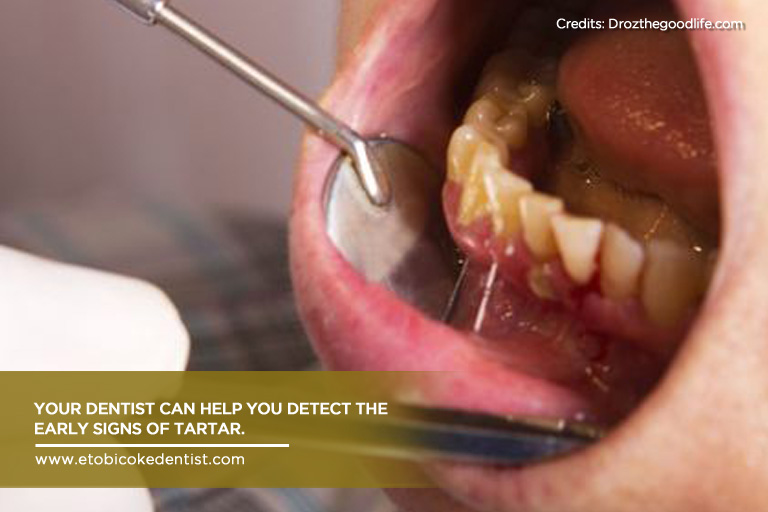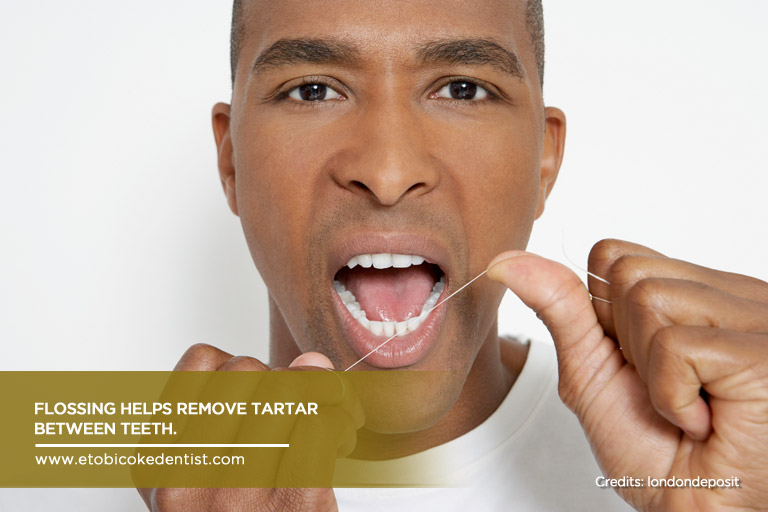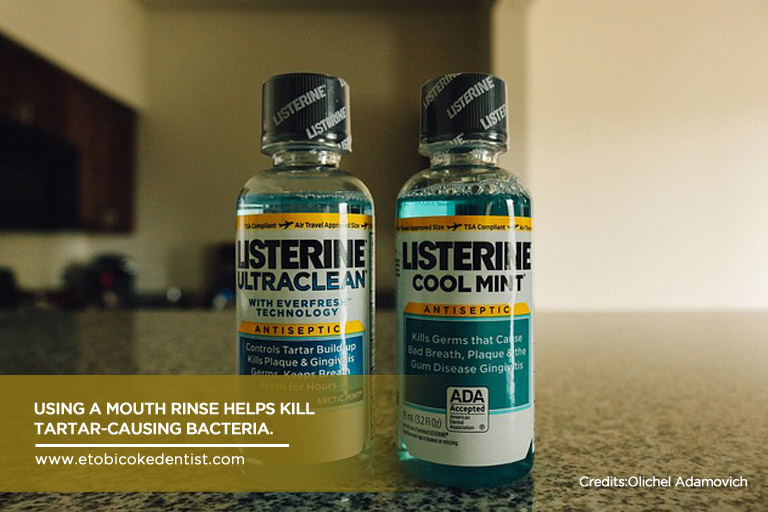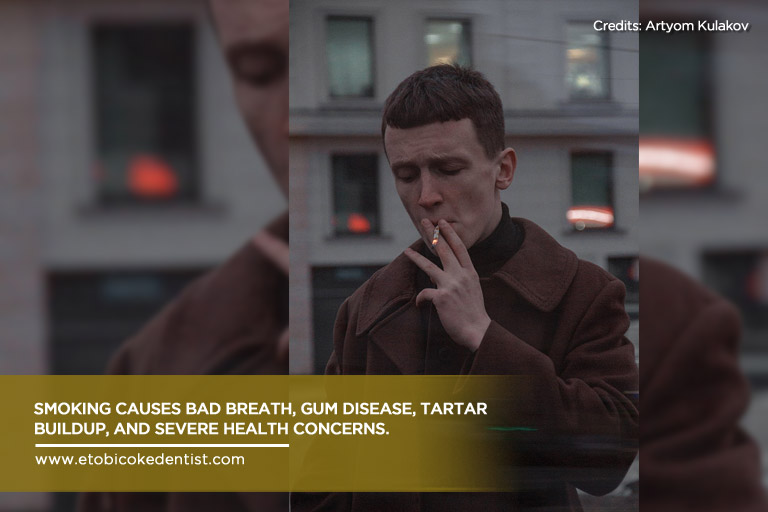Since we were children, we’ve been taught that it’s vital to brush, floss, and rinse to keep our mouth clean to prevent tartar buildup. It has become ingrained in our minds that tartar damages our teeth, so we do our best to keep up with these oral hygiene practices to have a beautiful smile.
However, do you know what tartar is and how it gets into our teeth? Do you know that the prevention of tooth decay and gum problems extends beyond proper oral care habits and has more to do with lifestyle change? Read on to learn more about tartar and how you can develop new habits to keep your mouth clean and improve your overall well-being.
What Is Tartar?
Regardless of how often or thorough you brush daily, bacteria will inevitably grow in your mouth. They cling to the food particles and proteins in the mouth, leading to the formation of a sticky, pale-yellow deposit called dental plaque. Plaque is the gunk that forms under the gumline and on the surface of the teeth. It contains millions of anaerobic bacteria that cause tooth decay and gum problems.
Failure to brush and floss regularly turns the dental plaque into tartar buildup, as the minerals contained in the saliva harden the plaque deposits on the teeth between 24 to 36 hours. That is why thorough teeth cleaning is imperative after every meal to make sure there is no food residue left in the mouth for the bacteria to feed on. People who are at a high risk of developing tartar are those who have a dry mouth, crowded teeth, those who wear braces, and those who smoke.

What Feeds Tartar Buildup
Food, saliva, and fluids create an environment in the mouth that triggers bacteria growth. Food rich in carbohydrates is the most significant contributor to tartar formation. Sugars (e.g. starches and sucrose) contained in candies, cakes, and soft drinks are the enemy of a healthy mouth.
When left unaddressed, tartar may lead to the following conditions:
- Gingivitis – This periodontal disease happens when bacteria infect the gum line. Tartar produces toxins that affect the gum tissue. This can cause gum inflammation and bleeding. In severe cases, gingivitis can weaken tooth enamel. Regular brushing helps keep your gum line clean and ward off plaque buildup and tartar.
- Cavities – Tartar contains acid-producing bacteria that can reduce the pH levels in the mouth and damage the enamel.
- Bad breath – Plaque buildup from poor oral care can also result in foul-smelling breath. Tartar may form small openings in crevices between the teeth and gums. Small food particles, bacteria, and plaque can accumulate in these areas, producing a foul odour.

How To Tell If You Have Plaque On Your Teeth
Most of the time, plaque can be difficult to spot because of its colour; it blends well with the shade of your teeth. This makes dental visits crucial for maintaining good oral health. Have your teeth checked by your dentist every six months. Dentists are well equipped to detect plaque in areas that are hard to reach.
Once a buildup is confirmed, your dentist or hygienist will scrape the deposit with a dental scaler and recommend oral hygiene practices unique to your teeth to address the problem at home.

Tips For Preventing Tartar
It’s never too late to keep your teeth and gums free from tartar. Introducing these habits to your lifestyle will lead to a healthier mouth and overall, a healthy body.
-
- Brush regularly – A clean mouth is a healthy mouth. It leaves no room for bacteria to flourish, so it’s essential to adhere to proper oral hygiene. Brushing for 30 seconds two times a day isn’t guaranteed to remove or prevent plaque, so brush at least twice a day for two minutes each time. Make sure to clean all surfaces, especially the hard-to-reach areas (on your rear molars and behind your teeth). Use a toothpaste that contains fluoride and a soft-bristled brush.
- Floss daily – Brushing alone won’t clean every space in your mouth. Flossing helps get rid of even the tiniest food debris from all crevices. Make flossing a habit may not be easy at first; however, you can include it with your regular activities. For instance, you can floss while watching TV or listening to tunes.
While at it, be sure to floss correctly. Below are the four steps of proper flossing, according to the Canadian Dental Association (CDA):
-
-
- 1. Cut 18 inches (long enough to have an unused portion as you move from one tooth to another) of floss and wind it around your middle finger or index finger of one hand. Then on your other hand, wind a small amount around the middle or index finger.
- 2. Gently slide the floss between your teeth. Making a ‘C’ shape, wrap the floss around the base of the tooth and slowly under the gumline. Then wipe the tooth from base to tip three times.
- 3. Floss both sides of every tooth and don’t forget the backs of your last molars. Move to the clean segment of the floss as it picks up particles.
-
After flossing, brush your teeth to prevent gum disease and tooth decay.

-
- Rinse – Mouth rinses, especially fluoride rinses, give you an added layer of protection against bacteria. Rinse thoroughly after you have flossed and brushed your teeth. Keep these steps in mind when using a mouth rinse:
- 1. Use the right amount. A mouthwash dispenser can help in dispensing only the right amount you need and prevent spilling. Choose a rinse that helps fight plaque and prevent its regrowth.
- 2. If necessary, dilute it with water. Brands have varying concentration levels, and some may recommend dilution. Read the label for dilution instructions.
- 3. Swish the rinse for the right amount of time. Rinses are usually swished in the mouth for about 30 seconds to a minute. Spit out the rinse afterwards.
- Rinse – Mouth rinses, especially fluoride rinses, give you an added layer of protection against bacteria. Rinse thoroughly after you have flossed and brushed your teeth. Keep these steps in mind when using a mouth rinse:
It is important to remember that a mouth rinse is not a replacement for regular brushing and flossing. The primary purpose of mouth rinses and mouthwashes is to freshen breath and kill bacteria. However, if you suffer from halitosis or chronic bad breath, it’s best to consult your dentist to get proper advice on how to treat your condition.

-
- Quit smoking – Tobacco products can affect the gum tissue. Smokers become more prone to dental infections and gum disease. Smoking also stains the teeth, causes bad breath, and can result in several serious health risks. Try to minimize smoking until you can completely kick the habit. Your dentist may be able to help you address nicotine cravings.
- Eat a healthy diet – The CDA found out that the average Canadian consumes about 40 kilograms of sugar a year. The food you eat will either feed or starve the bacteria in your mouth, so try to cut back on sugary foods and eat more fruits and vegetables. Sugar is not only bad for your oral health, it also harms your overall well-being, since a sugar-rich diet can increase your risk of acquiring diabetes.
- Fruits and vegetables rich in fibre – These foods help keep your teeth and gums clean by stimulating saliva production in your mouth that flushes out bacteria. Saliva also has phosphate and calcium that prevent acids from harming your teeth.
- Dairy products – Dairy products like milk, cheese, and plain yogurt also stimulate saliva production. The calcium and phosphate in dairy can also help restore tooth enamel.
- Herbal teas – Green and black teas have polyphenols that destroy anaerobic bacteria and prevent acids from attacking the teeth.
Smoking and other tobacco products can lead to gum disease by affecting the attachment of bone and soft tissue to your teeth. More specifically, it appears that smoking interferes with the normal function of gum tissue cells. This interference makes smokers more susceptible to infections, such as periodontal disease, and also seems to impair blood flow to the gums – which may affect wound healing.
Tartar buildup that is lodged onto the tooth enamel can only be removed by a dentist. Each person’s vulnerability to tartar buildup can vary; however, bacterial deposits tend to build up faster as we age. To get a thorough assessment of your teeth and get a tailored treatment, consult a caring and reliable dental professional.
At Dr. Mark Rhody Dentistry, we put a premium on tartar prevention. Our clinic in Etobicoke offers excellent services using the latest technology that helps us provide you with the dental care you deserve. Call us today at (416) 231-4281 or fill in this form to instantly book an appointment.
